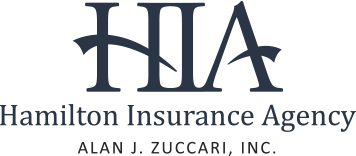
30 Nov An Interview with Hamilton Insurance
Written by Ben Swett for Levin Associates
Nearly 20 years ago, the insurance industry faced a major crisis as many insurers removed themselves from the general liability market, leaving providers naked from a coverage perspective. As a result, entire portfolios were sold off due to overpriced liability coverage and its lack of availability.
We sat down with Keith Parnell and Jason Zuccari of Hamilton Insurance Agency to discuss the state of the market as the pandemic looms over the country. Hamilton is a family-owned operation and one of the nation’s largest independent insurance brokerage firms that has specialized in the senior housing and long-term care space for more than 40 years.
The SeniorCare Investor: Insurance costs across the board seem to be rising. Is it going to get worse before it gets better?
Hamilton Insurance Agency: Nationally, it’s the perfect storm. Prices are going to continue to rise until operators decide to use alternative risk solutions or the government steps in with new litigation relief. We’re in what’s called a hard market. It was coming before Covid and the virus exacerbated it along with the many natural disasters that have hit. Claims are outpacing premiums so fewer carriers are willing to write in the healthcare market. As the virus spreads and more regulatory oversight happens in long-term care and senior housing, it’s going to get much worse. Operators who get fined for poor infection control protocols are going to have a harder time finding insurance and, generally speaking, if you have Covid in the building, there is high potential for liability claims and lawsuits.
SCI: Professional liability insurance premiums are on the rise due to many factors, Covid-19 being one of them. Are insurers leaving the senior care market?
HIA: Insurance companies receive premiums with the hope that they never have to pay claims. When they do have to dole out money, deductibles are going to naturally rise in step. There has been a huge increase in the number of claims paid, so the increase is unarguable.
Insurers aren’t exactly leaving the market. A few of them put moratoriums on during the height of the crisis, but in general they have just become much more restrictive, better at underwriting and more detail-oriented. For example: in the past carriers asked for bed counts, now they’re drilling down to what infection control programs look like and scrutinizing things on a granular level.
SCI: What can a provider do if this happens?
HIA: In most cases providers have covenants or lease or loan agreements, so they’re going to have to work on solutions with lenders and insurance risk management companies. In such a tight position, coverage may not be available for some operators.
SCI: What happens if they can’t replace their carrier, and that puts them into technical default on loan or lease covenants?
HIA: Everything is insurable for a dollar, but sometimes that’s not affordable. Operators are going to have to do their due diligence with an experienced broker to find the best fit for their organization.
Many lenders and landlords are working with their clients and being amenable to their situation. Obviously, you can’t bankrupt your operation just to buy insurance, so providers will have to consider possible remedies including larger deductibles, taking on more risk, lower limit policies or restructuring to alternative risk policies.
SCI: Are you seeing any parallels to what happened 20 years ago, especially in Florida?
HIA: Twenty years ago in Florida it was very hard to get insurance. Many carriers left the state because they were seeing too many large claims in certain jurisdictions. They couldn’t get high enough premiums to make it sustainable. We’re not seeing the exodus right now because we’ve got a good core group of insurers out there, but we are seeing the prices go very high on some accounts. It’s usually driven by the quality of buildings, but it could come down to jurisdiction as well.
The current national crisis doesn’t exactly parallel what happened in Florida 20 years ago. That was solely a liability issue, and the property insurance was not very hard to obtain. Now everything is tightening at the same time. You have the property market suffering from hurricanes, floods and tornadoes. With Covid, there are huge unknowns in the liability market as to what will be paid out, as far as liability and workers comp claims. We have seen a number of claims come in but none have settled yet.
SCI: Are lawsuits stemming from Covid-19 deaths generally not covered under a GL policy, which is why the industry has been trying to get liability relief from the federal government?
HIA: It comes down to who has the burden of proof. Prove they caught Covid in the building or prove they didn’t. It’s a gray area and we’re going to see a lot of legal battles stemming from this. On the professional liability side, who brought it into the building will be the central question. Providers will have to understand how the virus arrived and the effectiveness of its infection control program if they were unable to stop it from spreading to other residents. There is definitely some liability there and we’re starting to see claims roll in. The federal government can try to pass legislation, however not every state will abide by the Feds. In some states it will help, in some it won’t.
SCI: Can providers lock in their policies for two or three years now if they think premiums will rise or coverage will disappear?
HIA: I don’t think there are carriers out there who offer multi-year policies. The risk of something blowing up from one year to the next is just too great. Additionally, the reinsurance contracts wouldn’t allow for it.
SCI: How about the property/casualty (P&C) side of the business? Are the western fires and southern hurricanes driving up pricing? And by how much?
HIA: It really depends on the claims that come in. On the property side, I think we have leveled off a bit and the reinsurance contracts are mostly renegotiated for the beginning of next year. I do think we will see a continuing rise in professional liability in the form of higher deductibles. Fires, flooding and hurricanes are always driving prices up. In some of the fire-stricken areas in California, it’s pretty difficult to get insurance.
SCI: Are there ways to change existing coverage to minimize the financial impact?
HIA: It’s not a one size fits all world. We try to design insurance programs to address the different financial impacts that are out there. Our initial objective is to gauge our clients’ level of risk aversion. The more risk averse they are, the more it’s going to cost. If they are not willing to take high deductibles or lower limits then we really need to work with them to convey the financial implications of purchasing different levels of insurance, including areas where they can self insure. Even on the health side, we focus on tweaking the programs to best fit their needs.
SCI: Are you doing a lot of hand holding at this point as customers wait to see what may happen?
HIA: Yes. We are trying to cushion blows if and when we can. A part of this is getting as much information as early as possible, so that we can be proactive. Though we are somewhat at the whim of the changing market, we can show our clients their full suite of options and walk them through advantages and disadvantages of what’s at hand, even if that means adjusting their existing business model. From experience we know that our risk management services will impress carriers on a building level and prevent future losses.
SCI: Many people think of insurance coverage as an afterthought, something they have to do but don’t like spending money on. How do you get your clients to be more proactive about it, understanding that one day it may save their business?
HIA: Preparing for the worst is never exciting, but it’s necessary. As a good broker and partner, we are proactive in catastrophic preparedness, from on-site risk managers to legal representation on stand-by. In years past risk management was a commodity, but with claims and costs creeping up, it has become more of an industry standard. It’s been a pivotal time to hone in on what insurance prices are and what projected premiums are going to be.

